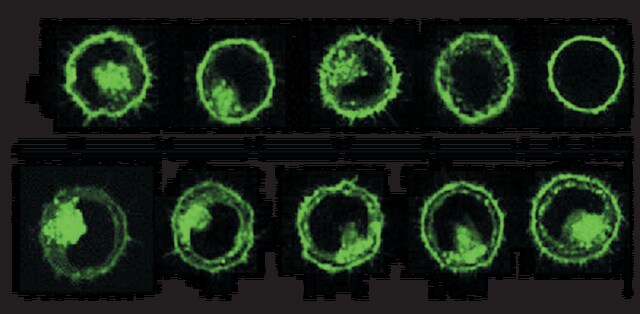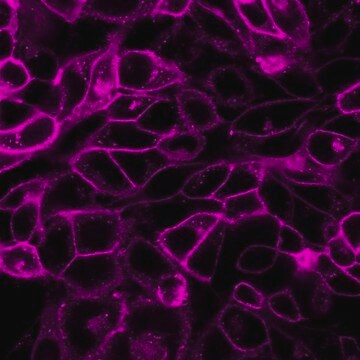MINI26
PKH26 Red Fluorescent Cell Linker Mini Kit for General Cell Membrane Labeling
Distributed for Phanos Technologies
Synonim(y):
Zestaw do etykietowania czerwonej membrany PKH
About This Item
Polecane produkty
opakowanie
pkg of 1 kit
producent / nazwa handlowa
Distributed for Phanos Technologies
warunki przechowywania
protect from light
metody
flow cytometry: suitable
fluorescencja
λex 551 nm; λem 567 nm (PKH26 dye)
Zastosowanie
cell analysis
detection
metoda wykrywania
fluorometric
Warunki transportu
ambient
temp. przechowywania
room temp
Opis ogólny
Zastosowanie
- labelling microglial, natural killer cells and preadipocytes
- tracking of viable transplanted adipose-derived stem cells
- in vitro proliferation studies of bone marrow stem cells
- general cell membrane labeling, including for in vitro cell labeling and long term in vivo cell tracking.
Powiązanie
Informacje prawne
Tylko elementy zestawu
- Diluent C 10 mL
- PKH26 Cell Linker in ethanol .1 mL
Hasło ostrzegawcze
Danger
Zwroty wskazujące rodzaj zagrożenia
Zwroty wskazujące środki ostrożności
Klasyfikacja zagrożeń
Eye Irrit. 2 - Flam. Liq. 2
Kod klasy składowania
3 - Flammable liquids
Temperatura zapłonu (°F)
57.2 °F - closed cup
Temperatura zapłonu (°C)
14 °C - closed cup
Wybierz jedną z najnowszych wersji:
Masz już ten produkt?
Dokumenty związane z niedawno zakupionymi produktami zostały zamieszczone w Bibliotece dokumentów.
Klienci oglądali również te produkty
Produkty
PKH dyes are easy to use and achieve stable, uniform, and reproducible fluorescent labeling of live cells. PKH dyes are non-toxic membrane stains which produce high signal to noise ratio.
Lipophilic cell tracking dyes enable cancer biologists to track tumor and immune cell functions both in vitro and in vivo. Read the article to choose a right membrane dye kit for cell tracking and proliferation monitoring.
Optimal staining is a key component for studying tumorigenesis and progression. Learn useful tips and techniques for dye applications, including examples from recent studies.
A video about how you can use fluorescent cell tracking dyes in combination with flow and image cytometry to study interactions and fates of different cell types in vitro and in vivo.
Nasz zespół naukowców ma doświadczenie we wszystkich obszarach badań, w tym w naukach przyrodniczych, materiałoznawstwie, syntezie chemicznej, chromatografii, analityce i wielu innych dziedzinach.
Skontaktuj się z zespołem ds. pomocy technicznej












